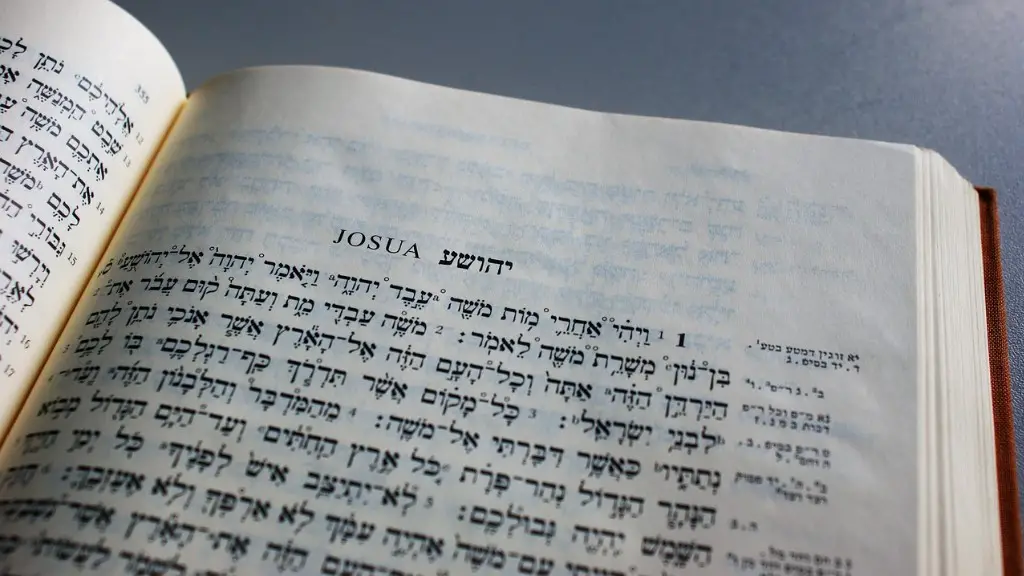What Is The Holy Bible Of Judaism
Judaism is a religion and an ethnic culture that originated in the Middle East thousands of years ago. Its holy book, the Tanakh, commonly referred to as the Bible of Judaism, is the foundational text of the Hebrew Scriptures, revered by Jews as the word of God. It is composed of three sections: the Torah, Nevi’im, and Ketuvim.
The Torah, meaning “instruction,” is the first and most important section of the Tanakh. It’s an anthology of books containing the histories, stories, laws, and prescriptions of the Jewish people. It’s divided into five books: Genesis , Exodus , Leviticus , Numbers ,and Deuteronomy.
The Nevi’im, meaning “prophets,” is the second section of the Tanakh. It contains a collection of books featuring writings from various prophets. It’s divided into two subsections, the Former Prophets and the Latter Prophets. The Former Prophets includes Joshua , Judges , Samuel, Kings ,and Isaiah. The Latter Prophets consists of the books of Jeremiah , Ezekiel , and The Twelve.
The Ketuvim, meaning “scriptures,” is the third and final section of the Tanakh. It contains a collection of books of wisdom literature, poetry, Psalms, and stories. It includes books such as Proverbs , Ruth , Song of Songs , Ecclesiastes , Lamentations , Esther , Daniel , Ezra, Nehemiah , and Chronicles.
The Bible of Judaism is essential to the Jewish faith. It is important to learn its teachings and live according to its laws and commandments. The Tanakh is also essential to Jewish identity. Jews use it to connect with their history, culture, and faith, and to guide their lives today.
Spiritual and Historical Significance
The Bible of Judaism is revered by Jews as holy and sacred. Its teachings provide the spiritual foundation for their faith and beliefs. Its stories help to teach important virtues like faith, courage, respect, and love. The Tanakh contains stories of the founding of the Jewish nation by Abraham, the Exodus from Egypt, the life of Moses, and the reign of the Davidic and Judaic kings. Its stories provide an important source of identity and connection with the Israelite and Jewish people.
Authority and Authentication
The Bible of Judaism is considered to be an authoritative source of morality, law, and tradition in Judaism. From a linguistic and textual point of view, it is essential to note that the Tanakh is a collection of books written by many different authors. It is authenticated through divine revelation and authenticated by rabbinical tradition and interpretation.
Relevance and Interpretation In The 21st Century
In the 21st century, the Tanakh is still alive and relevant to Judaism. While some of its teachings may appear outdated to modern readers, Jewish scholars interpret the Tanakh in light of contemporary issues and modern thought. Through interpretation and study, the teachings of the Bible of Judaism remain relevant and meaningful.
Impact on Jewish Culture and Tradition
The Bible of Judaism has had an immense impact on the culture and traditions of Judaism. It shapes the way the Jewish people live their lives, from the dietary restrictions prescribed in the Torah to the rituals of life passages. It is also a source of inspiration for Jewish art and literature.
Rabbinical Authority and Leadership
In Judaism, the Tanakh is a source of authority for rabbis and leaders. Rabbis study and interpret the Bible of Judaism, offering guidance and instruction to the people. They use the Tanakh to provide spiritual and moral leadership, helping to shape the direction of the Jewish community.
Role in Jewish Education
The Tanakh also plays a critical role in Jewish education. Through the study of the Bible of Judaism, Jewish children learn the stories, values, and traditions of their communities. They learn about history, culture, and faith, building their understanding of the complexities of Judaism.

